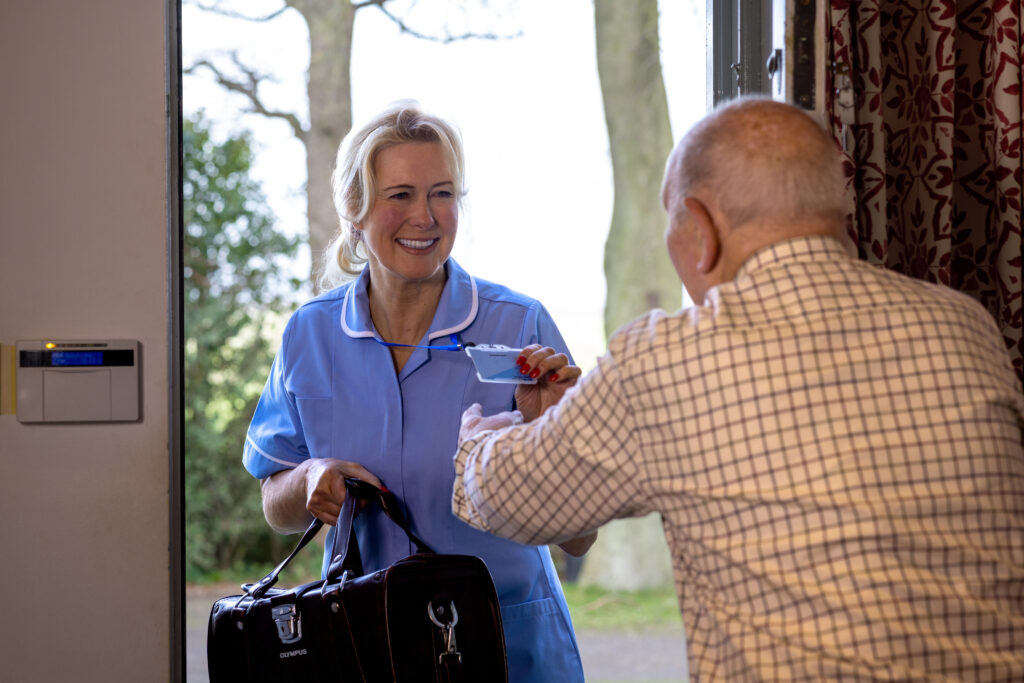Some of the most vulnerable people in Leeds are benefiting from a pioneering approach to reduce or avoid hospital admission and make it safer and easier for people to go or stay at home.
Despite being medically fit for discharge, many people are unable to safely leave hospital because of the lack of timely and appropriate support in the community. This is a nationwide challenge, with an average of 12,300 such people a day in hospital beds across the country [1].
Many of these people are admitted to hospital because they have become seriously unwell when earlier care may have helped them stay at home.
The impact – on people’s long-term recovery, on their regaining independence and on the cost to health and social care – is significant.
Leeds’ HomeFirst was one of five NHS ‘frontrunner’ programmes and has been focusing on transforming intermediate care [2]. That is, care for people who have been in hospital or who are at risk of going into hospital. Typically, they need non-medical help and support in, for example, taking medicines, getting dressed, making meals, regaining confidence to walk and live independently again.
Leeds’ HomeFirst programme is hailed as a national exemplar for its innovative approach. This includes using data and digital tools which have helped achieve outstanding results in addressing this challenge, with the potential for embedding long term, systemwide change.
As a result of the programme’s first 18 months’ work, based on October 2024’s figures, over 1,200 fewer adults were admitted to hospital. For those admitted to hospital, length of stay for people requiring support on discharge was cut by 17 per cent and more than 400 more people went directly home without needing a bed in an intermediate care setting.
These figures represent a suite of measurable improvements which have lasting potential thanks to the ‘blueprint’ for systemwide change HomeFirst has created.
“These are some of the most vulnerable people in our communities, many of whom are older people and have multiple long-term health conditions,” says Megan Rowlands, Programme Director, HomeFirst.
“The number of people aged over 80 is forecast to increase by 25 per cent by 2035 whilst the number of people with four or more multiple long-term conditions is forecast to double by 2035. So, to develop sustainable, more effective care that better supports people’s wellbeing and independence, it’s been crucial that we took a deep dive into the issue and better understand what needed to change and how. That’s what HomeFirst is about.”
The HomeFirst Programme is a partnership between health and care organisations in Leeds working with delivery partner Newton.
“It was vital to take a partnership approach in this,” says Megan. “We needed to properly understand people’s experiences, both the staff and people they work with. We wanted to find out what matters to people, what’s working well or isn’t and how can we design services which avoid unnecessarily disrupting people’s lives or compromising their independence.”
Analysing people’s and carer’s feedback along with health and care data about this population group via the Leeds Data Model, enabled the HomeFirst Programme to establish specific goals and measurable indicators of success, learning as they went.
Digital tools have been a core part of informing what needed to change and how. For example, the programme team worked alongside staff to design a new app which is now used by all support workers on their digital devices to feedback information following every visit to a patient.
That has enabled the service to make real-time care decisions which are personalised to that individual. It ensures more efficient use of resources and improves support for more people at home.
As part of the programme research, people and carers said that one of the top areas for improvement was communication and coordination, particularly between different staff groups and organisations.
To help address this the team have developed a Recovery Plan. It uses existing digital functionality to provide a shared read/write plan where staff can ensure that what matters to the person is captured, along with plans, actions and updates.
The Recovery Plan has initially been rolled out across hospital wards to support teams working together on discharging people. It is already enabling people to leave hospital more quickly and smoothly once they have completed their hospital care. That means staff have more time to focus on working with people rather than looking for information. The team are now considering how this approach can be extended to other areas.
In turn, this data and these insights have fed into a unique ‘system visibility data dashboard’.
“The system visibility dashboard, as well as the governance established around this, have had an immense impact,” says Sean Gill, HomeFirst Programme Lead.
“Partnership working is a huge strength of the Leeds system, and this has really maximised the benefits that have come from improving visibility and developing a culture of data-led decision making.
“It’s truly innovative, providing a real-time breakdown of performance across intermediate care, with insights ranging from whole-system trends over time to detailed information on individual service users. This allows staff at all levels to make better-informed decisions and improve the support they provide to those accessing their services.”
With equivalent financial benefit for the health and care system in Leeds estimated at £17 million to £23 million a year, the implications of HomeFirst are transformational. As the current phase of the programme concludes, the team is working to embed these improvements for the longer term.
Its success in Leeds has attracted acclaim nationally and internationally, with NHS England colleagues steering an Australian health and care delegation to visit Leeds earlier this year to learn about HomeFirst.
“The very strong culture of collaboration across our city’s health and care partners, our single, shared data source – the Leeds Data Model, and having a shared measurable ambition for delivery have all been critical success factors,” explains Megan.
“We’re proud of what we’ve achieved so far, but the job isn’t done,” says Megan. “We knew it wouldn’t be a one-step journey but, because of this work, we’re confident people in Leeds are receiving a better service than before.
“In the current climate, when services are stretched and resources are more precious than ever, it’s been essential that we create change using the resources we already have.
“We’ve achieved that in the work we’ve done so far, and the collaboration across our health and care system has strengthened enormously, which bodes well for further citywide and systemwide innovation.”
Header image: iStock.com/SolStock




